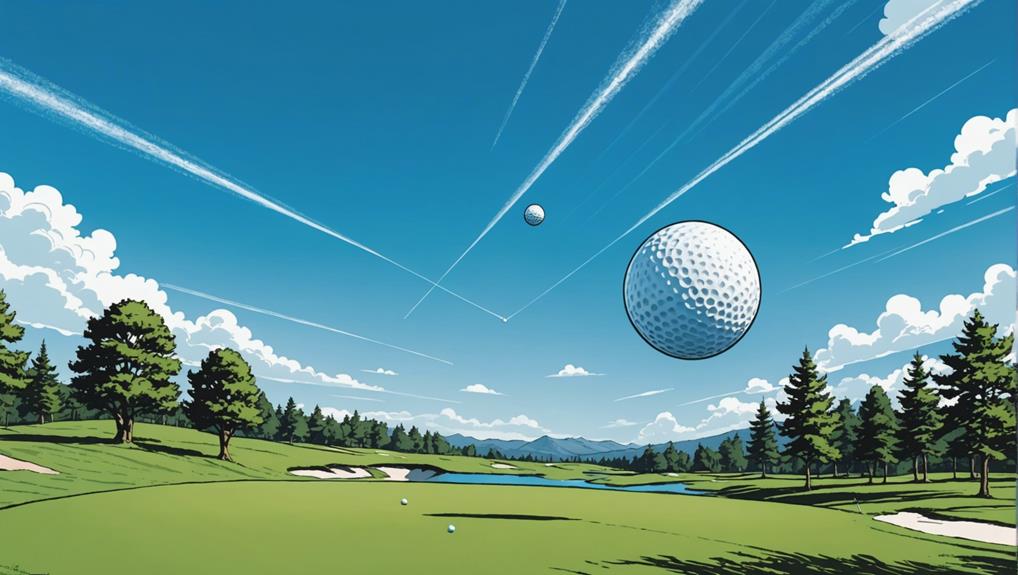When you watch a curling stone slide, it’s all about friction, ice texture, and spin working together. As the stone moves, microscopic ice imperfections and a thin water layer from pressure help control its speed and curvature. By spinning the stone, you create unequal friction on each side, making it curl in your desired direction. Understanding these forces helps you see how a perfect slide glides smoothly and curves predictably—keep exploring to learn more about how it all works.
Key Takeaways
- The stone’s curl results from differential friction on its sides, influenced by its spin and ice surface properties.
- A thin water layer from pressure and friction acts as a lubricant, affecting how smoothly the stone slides.
- Properly maintained, cold, and smooth ice ensures consistent friction, enabling predictable and controlled curling.
- Spin causes one side of the stone to experience more friction, creating a curved path rather than a straight line.
- Friction both slows the stone and enables curling, depending on ice texture, temperature, and surface imperfections.

Curling stones don’t just glide smoothly across the ice; their remarkable motion results from a combination of physics principles that you can actually observe and understand. At the core of this movement are frictional forces, which might seem simple but play a vital role in how the stone travels and curls. The ice surface properties are key here—its smoothness, temperature, and texture directly influence these forces. When you see a stone sliding, it’s not just a matter of it rolling straight ahead; it’s a delicate balance between forces that either slow it down or nudge it into a curve.
The curling stone’s movement hinges on friction and ice surface properties, creating a graceful, controlled curve.
The ice surface’s properties are intentionally maintained to optimize this sliding. The surface remains polished and cold, reducing the roughness that could increase friction. But even on smooth ice, some frictional forces always act against the stone’s motion. This friction isn’t just resistance; it’s what allows the stone to curl. As the stone slides, tiny microscopic imperfections and the thin layer of water created by the pressure and friction affect how much grip the stone has on the ice. This water layer acts like a lubricant, lowering the frictional forces temporarily and letting the stone glide more smoothly.
However, the curl isn’t random. It results from the initial spin you give the stone when you release it. When you apply a slight rotation, the frictional forces interact differently on each side of the stone. The side spinning into the direction of travel experiences slightly more friction, causing the stone to slow down on that side. The opposite side, with less friction, allows the stone to continue forward more easily, creating a curved path. The properties of the ice surface determine how much this differential friction influence the slide. A well-maintained, cold, and smooth surface ensures consistent behavior, so you can predict and control the curl. Additionally, the high coefficient of friction between the stone and ice surface influences how much grip the stone maintains during its slide.
Understanding the physics behind this helps you see why ice conditions matter so much in curling. If the ice is too rough or too warm, frictional forces increase, and the stone might stop sooner or not curl as much. If the ice is perfectly prepared, the balance of forces allows the stone to glide gracefully and curl precisely as intended. Essentially, the interplay of frictional forces and ice surface properties shapes the elegant, controlled movement of the curling stone, turning what looks like a simple slide into a fascinating application of physics principles you can observe and appreciate.
Frequently Asked Questions
How Does Temperature Affect the Stone’S Slide?
Temperature effects play a big role in how a curling stone slides. When it gets warmer, ice melting occurs, creating a thin layer of water that reduces friction. This makes the stone slide more smoothly and faster, but it can also make control trickier. So, warmer temperatures can lead to less predictable slides, while colder conditions keep the ice firmer, helping you maintain better control over the stone’s path.
What Role Does the Ice Quality Play?
Picture perfect curling depends heavily on ice quality, especially ice texture. When the ice is smooth and well-maintained, it minimizes friction, giving you greater control over the stone’s slide. Friction control is vital for precision, as rough or uneven ice increases resistance, making your shot unpredictable. So, you should focus on maintaining ideal ice conditions, ensuring the texture is just right for a slick, consistent slide that helps you hit your target every time.
Can Different Stone Materials Influence the Slide?
Different stone materials definitely influence the slide because of their stone durability and material friction. If the stone’s made from a smoother, less frictional material, it will glide more easily across the ice, giving you better control. Conversely, a rougher or less durable material might slow the stone down or cause unpredictability. So, choosing the right material helps optimize your shot, ensuring the stone slides smoothly and accurately toward the target.
How Do Players Control the Curl During Delivery?
You control the curl during delivery by adjusting your sweeping techniques and stance. As you release the stone, use sweeping to influence its speed and curl direction, helping it stay on its intended path. Your stance impacts your balance and ability to apply consistent force. By combining smooth sweeping with a steady, balanced stance, you can precisely guide the stone’s curl and optimize your shot accuracy.
What Is the Impact of Stone Shape on Sliding?
Imagine a dancer’s perfect spin—your curling stone’s shape influences its glide. The impact of stone shape on sliding hinges on stone symmetry and edge design; a symmetrical shape ensures a smooth, predictable trajectory, while unique edge design helps control curl and stability. When you choose a stone with ideal symmetry and edge features, you gain better control over the slide, allowing for precise shots and strategic plays on the ice.
Conclusion
Think of the curling stone as a skilled dancer gliding smoothly across the ice, guided by unseen forces. When you understand the physics—like friction, rotation, and the ice’s surface—you become the choreographer, directing its graceful slide. Mastering these principles lets you control the dance, making each move precise and elegant. Just as a dancer trusts their rhythm, trusting the physics behind the slide guarantees your stone’s perfect curl every time.










